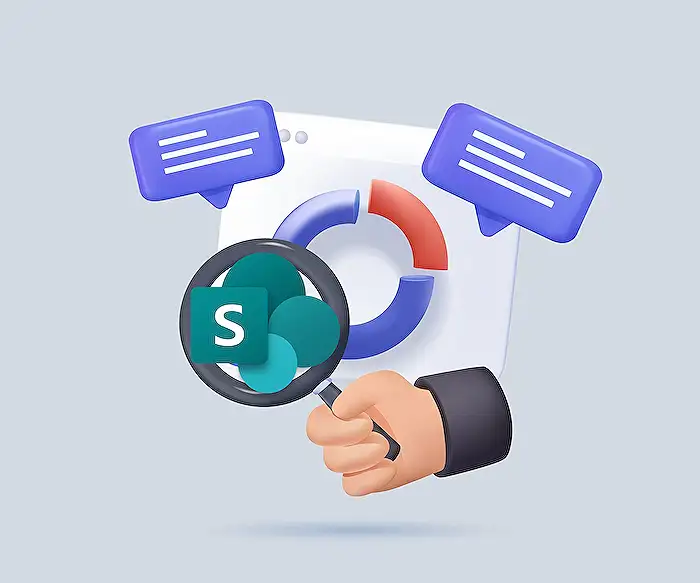
SharePoint’s Best Templates: Your Ultimate Guide
A Microsoft MVP 𝗁𝖾𝗅𝗉𝗂𝗇𝗀 develop careers, scale and 𝗀𝗋𝗈𝗐 businesses 𝖻𝗒 𝖾𝗆𝗉𝗈𝗐𝖾𝗋𝗂𝗇𝗀 everyone 𝗍𝗈 𝖺𝖼𝗁𝗂𝖾𝗏𝖾 𝗆𝗈𝗋𝖾 𝗐𝗂𝗍𝗁 𝖬𝗂𝖼𝗋𝗈𝗌𝗈𝖿𝗍 𝟥𝟨𝟧
SharePoint templates AI FAQ web part customizable layouts drag-and-drop content creation convert to news articles instantly
Key insights
-
SharePoint Page Templates: SharePoint now offers a gallery of professionally designed page templates that users can easily access, customize, and deploy. These templates help users create content quickly without starting from scratch.
-
AI-powered FAQ Web Part: A new AI-powered FAQ web part automatically generates questions and answers by extracting information from your documents, making it easier to build helpful FAQ pages for your team or organization.
-
Types of Templates: The main categories include Team Site Templates for collaboration, Communication Site Templates for sharing news and events, plus specialized options like Crisis Management, Onboarding, Learning & Development, Fundraising, and Brand Central.
-
Customization Features: Users can modify templates with flexible sections, drag-and-drop editing tools, custom layouts, and the ability to save their own designs as reusable templates. Advanced users can automate site setup using site scripts and site designs.
-
IsDefault Property for Automation: In 2025, SharePoint introduced the IsDefault property, allowing organizations to assign a custom template as the default for specific site types. This ensures every new site starts with preferred settings and design automatically.
-
Main Benefits of Templates: Using SharePoint templates saves time on setup, ensures brand consistency across sites, boosts productivity through pre-built structures, allows easy customization for different needs, and makes it simple to manage multiple sites efficiently.
Introduction: SharePoint’s Evolving Template Experience
SharePoint has long been a cornerstone of organizational collaboration and content management, but building engaging pages from scratch often required significant time and design skills. In a recent YouTube video tutorial by Daniel Anderson [MVP], viewers are introduced to SharePoint’s latest advancements in page and site templates for 2025. This comprehensive walkthrough highlights how these new tools are transforming the way teams create, customize, and publish content within SharePoint.
The video not only covers the basics of accessing and using the updated template gallery but also explores powerful features like AI-driven web parts and advanced customization options. As organizations seek to balance efficiency with branding consistency and flexibility, these new features promise to streamline workflows while also presenting new considerations.
Exploring SharePoint’s New Template Gallery
A major highlight of the tutorial is SharePoint’s expanded template gallery. Users now have access to a wide array of professionally designed layouts suited for various purposes, such as team collaboration, communication, onboarding, and more. With just a few clicks, site owners can select a template that matches their specific needs, eliminating the need to start from a blank canvas.
The gallery includes both Team Site and Communication Site templates, each optimized for different scenarios. For instance, team sites focus on shared resources and collaboration, while communication sites are ideal for broadcasting news or events across an organization. This variety supports many use cases, from crisis management to fundraising initiatives, ensuring every department can find a relevant starting point.
Customization and Advanced Editing Features
Once a template is selected, SharePoint offers robust tools for customization. The video demonstrates how users can modify layouts, add or rearrange web parts, and personalize content to reflect their organization’s identity. Drag-and-drop editing and flexible section controls make it easier than ever to tailor pages without deep technical expertise.
Notably, the tutorial introduces a new AI-powered FAQ web part. This feature automatically generates content from existing documents, substantially reducing manual effort. While this innovation accelerates content creation, it also introduces tradeoffs—organizations must ensure that generated answers are accurate and align with their communication standards. Nonetheless, the ability to quickly build FAQ pages, training hubs, or project check-ins significantly boosts productivity.
Saving, Managing, and Automating Templates
In addition to using pre-built templates, SharePoint now allows users to create and save custom templates for future use. This means organizations can develop pages that precisely fit their needs and easily replicate them across different projects or departments. The video also covers how to manage and edit saved templates, providing flexibility as requirements evolve.
For administrators, advanced features like site designs and site scripts enable greater automation. A standout update for 2025 is the new IsDefault property, which lets organizations set a custom template as the default for specific site types. By leveraging PowerShell commands, IT teams can ensure that every new site automatically adheres to company standards, balancing the need for control with the desire for user autonomy.
Benefits and Challenges of Template-Driven Design
The primary advantage of these new SharePoint templates is clear: they save time and foster consistency. Organizations can quickly deploy sites with a uniform look and feel, which strengthens brand identity and reduces errors during setup. Pre-built workflows and structures streamline collaboration, helping teams focus more on content rather than design.
However, there are challenges to consider. While templates offer flexibility, over-customization can sometimes undermine the benefits of standardization. Additionally, relying on automated content generation requires careful oversight to maintain accuracy. Balancing these factors is key to maximizing the value of SharePoint’s templating system.
What’s New in 2025: Looking Ahead
SharePoint’s 2025 update brings a larger library of free templates tailored to modern workplace needs, enhanced selection guidance, and improved automation capabilities. The introduction of features like the AI-powered FAQ web part and the IsDefault property underscores Microsoft’s commitment to making SharePoint both powerful and user-friendly.
As organizations continue to adapt to evolving collaboration trends, these innovations help teams launch impactful sites with less effort. Yet, success will depend on finding the right balance between automation, customization, and governance—a dynamic that SharePoint’s evolving template ecosystem is well-positioned to support.

Keywords
SharePoint templates tutorial SharePoint coolest templates SharePoint template guide SharePoint customization tips SharePoint design templates SharePoint site templates SEO for SharePoint best SharePoint practices